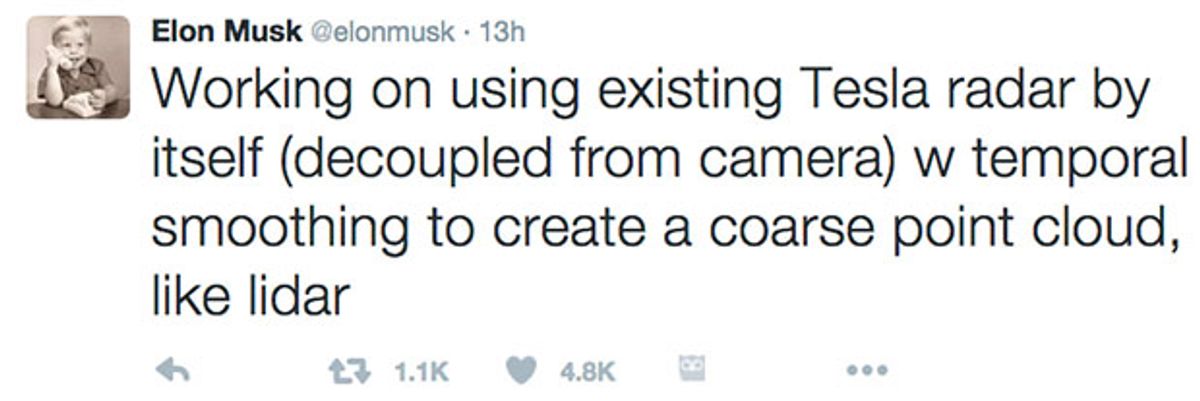Elon Musk says today’s Tesla cars can improve their self-driving ability with its existing radar system by generatingthe kind of point cloud you’d normally expect only from lidar. (Lidar’s the laser sensing system used in the trademark, roof-mounted beacons in Google cars.)
In messages on his Twitter feed, Musk explained that radar could create in effect a stereoscopic, 3D map by making repeated measurements as the car moves, each time getting a slightly different point of view. Lidar achieves this effect by scanning the laser beacon.
Many major car companies have started working with lidar, in part because the technology is getting less expensive. But although Telsa was recently reported to be experimenting with lidar, the company remains a notable holdout.
Today’s Tesla cars could realize “certainly moderate and maybe big advances w no incremental hardware,” Musk said in another Tweet.
Lidar offers greater precision than radar, but it can’t see nearly as well through rain, snow, and fog. It’s also very conspicuous, though future setups will likely eschew the roof tower for less obtrusive packages that can be hidden in the grille and salted around the corners of the car.
Most big car makers believe that fortrue self-driving capability many different and complementary sensors will be needed. Each one would serve as backup,covering the blind spots of all the others.
Of course, the most capable backup is the human being behind the wheel—provided that the human rivets his attention to the road. But,as the recent fatal accident of a Tesla Model S has demonstrated, a human freed from moment-to-moment driving chores may be not much backup at all.
Philip E. Ross is a senior editor at IEEE Spectrum. His interests include transportation, energy storage, AI, and the economic aspects of technology. He has a master's degree in international affairs from Columbia University and another, in journalism, from the University of Michigan.



